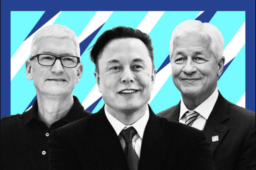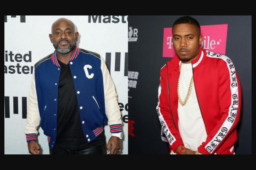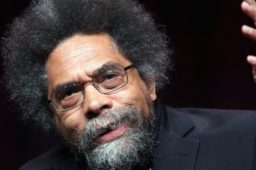Russia is bombarding major cities in Ukraine, more than a week into a war where Moscow has faced setbacks on the battlefield — yet seems undeterred from its campaign to take Ukraine.
On March 4, Russia seized Zaporizhzhia, one of Europe’s largest nuclear power plants. Russian shelling of the southeastern Ukraine facility set off a fire, which Ukrainian officials warned could set off a nuclear disaster. It took hours, but the fire was extinguished, and international monitors said that they do not detect elevated radiation levels and that the fire did not damage “essential” equipment. US officials have said Russia now appears to be in control of the plant.
But the incident was a reminder of how dangerous this war in Ukraine is becoming, and how uncertain and confusing things still are on the ground. Russian troops were advancing toward Kyiv, and thousands and thousands are fleeing in advance of a possible siege on the city.
The Russian military has made advances in the south, and are gaining in the area of Kherson, a port city on the Black Sea whose control is reportedly contested, and Mariupol, on the Sea of Azov. Russian bombardment of these cities has resulted in humanitarian issues, with bridges and roads damaged by the fighting and dwindling access to food, clean water, medicine, and electricity in certain areas. Kharkiv, Ukraine’s second-largest city, experienced heavy Russian fire this week, and strikes have heavily damaged residential areas.
Ukrainian and Russian officials met in early March, and tentatively agreed on the need to humanitarian corridors — basically, safe zones for civilians to flee and supplies to pass through — but did not reach agreements on a larger ceasefire. As of March 6, multiple attempts to evacuate Ukrainian civilians have been halted because of Russian shelling.
:no_upscale()/cdn.vox-cdn.com/uploads/chorus_asset/file/23278197/GettyImages_1238768041.jpg)
:no_upscale()/cdn.vox-cdn.com/uploads/chorus_asset/file/23277745/GettyImages_1238832242.jpg)
:no_upscale()/cdn.vox-cdn.com/uploads/chorus_asset/file/23268561/russia_map_feb24.jpg)
Putin’s attempt to redraw the map of Europe risks becoming the most devastating conflict on the continent since World War II. Already, it is causing an astounding humanitarian crisis: Hundreds, perhaps thousands, of civilians have died, and more than 1.5 million people have fled the violence so far, according to the United Nations High Commissioner for Refugees, making it the fastest-growing refugee crisis in Europe since World War II.
The battle for Ukraine began in the early morning hours, local time, on February 24, when Russian President Vladimir Putin launched what he called a “special military operation” into the country of about 40 million. He claimed the Russian military seeks “demilitarization and denazification” but not occupation; attacks shortly followed from multiple fronts and targeted toward multiple cities.
Ukraine’s resistance has complicated Russia’s efforts to seize the country. Russian forces have not made the progress they likely thought they would at the start of the campaign. The Russian military’s early strategy has perplexed some experts and observers. But the more protracted this war becomes, the more catastrophic it will be.
:no_upscale()/cdn.vox-cdn.com/uploads/chorus_asset/file/23268404/AP22055415418705.jpg)
:no_upscale()/cdn.vox-cdn.com/uploads/chorus_asset/file/23268419/AP22055567815036.jpg)
:no_upscale()/cdn.vox-cdn.com/uploads/chorus_asset/file/23268424/AP22055296438061.jpg)
:no_upscale()/cdn.vox-cdn.com/uploads/chorus_asset/file/23268426/AP22055579406038.jpg)
The United States and its allies in Europe and the United Kingdom imposed the toughest financial sanctions ever on Russia after the first incursion, and have only built on these penalties since. On February 26, the United States and European countries agreed to block some Russian banks from SWIFT, a global messaging system, which will essentially prevent those institutions from doing any global transactions, a punishment that allies had previously hesitated to pursue. Already, Russia’s economy is reeling from the impact of these penalties.
This sustained international pressure, and Ukraine’s resistance, may still not be enough to force Russia to end its military campaign. That leaves Ukraine — and the world — in a perilous and unpredictable moment.
Ukraine is under siege
After months of Putin building up tens of thousands of troops near the Ukrainian border and a series of failed diplomatic talks, Russia is now waging a full-out war on Ukraine.
Tensions escalated quickly when, on February 21, Putin delivered an hour-long combative speech that essentially denied Ukrainian statehood. He recognized the independence of two breakaway regions in eastern Ukraine where Moscow has backed a separatist rebellion since 2014 and sent so-called peacekeeping forces into the region. As experts said, that was likely just the beginning, setting the stage for a much larger conflict.
Days later, that larger conflict materialized. On February 24, Putin announced he was launching an assault “to defend people who for eight years are suffering persecution and genocide by the Kyiv regime,” a reference to a false claim about the government in Ukraine. He demanded Ukraine lay down its weapons or be “responsible for bloodshed.”
Soon after Putin’s speech, reports emerged of explosions around cities, including Kharkiv in eastern Ukraine and the capital Kyiv. The Ukrainian foreign minister called it “a full-scale invasion of Ukraine.” By the afternoon in Ukraine, Russian troops and tanks had entered the country on three fronts: from Belarus in the north, from the east of Ukraine, and from the south.
:no_upscale()/cdn.vox-cdn.com/uploads/chorus_asset/file/23268456/GettyImages_1238719428.jpg)
The Russian military has targeted critical infrastructure, like airports, with airstrikes and has launched more than 400 missiles, as of March 1. As a senior US defense official said on February 26, “There’s no doubt in our mind that civilian infrastructure and civilian areas are being hit as a result of these barrages.”
The main battlefronts are in Kyiv’s outskirts; in southern Ukraine, including the major city of Mariupol; and in eastern Ukraine around Kharkiv, the country’s second-largest city.
“They had maximal war aims,” Michael Kofman, research director in the Russia studies program at CNA, said in an interview posted on Twitter on February 25. “They had a military operation that’s now in progress, first to try to achieve regime change, encircle the capital, and try to overthrow the Ukrainian government, and then a much larger set of pincer movements to encircle and envelope Ukrainian forces. Try to do this quickly and force surrender of isolated pockets.”
But the Russian army has not been able to completely roll over Ukrainian forces, and some analysts have suggested Moscow may have been surprised at Ukraine’s resistance. Pentagon officials said that, as of March 4, Russia has committed about 92 percent of its combat power so far. Ukraine’s airspace remains contested.
Samuel Charap, a senior political scientist at RAND Corporation, told a panel of reporters on February 28 that Russia’s military performance has been odd. “In other words, some of the things that I would have expected — like the air force taking a major role — have not happened.”
“Seems to me there was a lot of war optimism and a sense that the [Ukrainian] government would fall with just a little push,” Charap continued. “And that didn’t happen. I wouldn’t read too much into that about the ultimate course of the war, though. This is still a situation where the deck unfortunately is stacked against the Ukrainians, despite their bravery.”
:no_upscale()/cdn.vox-cdn.com/uploads/chorus_asset/file/23278270/AP22058345121090.jpg)
:no_upscale()/cdn.vox-cdn.com/uploads/chorus_asset/file/23278278/GettyImages_1372983801.jpg)
:no_upscale()/cdn.vox-cdn.com/uploads/chorus_asset/file/23278282/GettyImages_1238788724.jpg)
Putin himself has called on the Ukrainian army to “take power into their own hands and overthrow” Ukrainian President Volodymyr Zelenskyy, a sign that Putin remains focused on regime change. “According to the available intelligence, the enemy marked me as a target No. 1 and my family as the target No. 2,” said Zelenskyy, speaking on the night of February 24.
Efforts to stop the fighting have so far failed. On February 28, high-level officials from Russia and Ukraine met at the Ukraine-Belarus border, and again on March 3. Russia has continued to insist that a ceasefire requires “demilitarization” and neutrality for Ukraine, but Ukraine has only continued to push for more military aid and ascension into Western bodies like the EU, even signing an EU membership application amid the fighting.
Both Ukraine and Russia have suggested they will hold another round of talks in coming days. Across conflicts, there is usually a severe escalation in fighting before ceasefires, as everyone attempts to maximize their leverage. “I think that they want to inflict maximum damage to pressure the Ukrainian government to seek some sort of ceasefire that is effectively a surrender,” said Margarita Konaev, associate director of analysis and research fellow at Georgetown’s Center for Security and Emerging Technology.
:no_upscale()/cdn.vox-cdn.com/uploads/chorus_asset/file/23278468/GettyImages_1238833700.jpg)
The toll of this young conflict is growing. The UN has said that, as of March 6, more than 350 civilians have been confirmed killed and hundreds more have been wounded; Ukraine’s emergency services puts the civilian death toll at 2,000 people as of March 2. Ukrainian officials have said about 11,000 Russian troops have been killed in the fighting, as of March 6, but American and European estimates of Russian casualties have been substantially lower. The Russian government has reported nearly 500 soldier deaths. Experts said all these statistics should be treated with a great deal of caution because of the fog of war and the incentives both Russia and Ukraine have to push a particular narrative.
Ukrainian officials have also accused Russia of war crimes after reports of a shelling of an orphanage and kindergarten outside of Kyiv. Across Ukraine, thousands of civilians of all ages are enlisting to fight. Ukrainian officials called on residents to “make Molotov cocktails” to defend against the invasion. More than 1.5 million Ukrainians have fled to neighboring countries like Poland since the conflict began, according to a United Nations estimate.
:no_upscale()/cdn.vox-cdn.com/uploads/chorus_asset/file/23278360/GettyImages_1238829371.jpg)
The roots of the current crisis grew from the breakup of the Soviet Union
Russia’s invasion contravenes security agreements the Soviet Union made upon its breakup in the early ’90s. At the time, Ukraine, a former Soviet republic, had the third-largest atomic arsenal in the world. The US and Russia worked with Ukraine to denuclearize the country, and in a series of diplomatic agreements, Kyiv gave its hundreds of nuclear warheads back to Russia in exchange for security assurances that protected it from a potential Russian attack.
But the very premise of a post-Soviet Europe is helping to fuel today’s conflict. Putin has been fixated on reclaiming some semblance of empire, lost with the fall of the Soviet Union. Ukraine is central to this vision. Putin has said Ukrainians and Russians “were one people — a single whole,” or at least would be if not for the meddling from outside forces (as in, the West) that has created a “wall” between the two.
Last year, Russia presented the US with a list of demands, some of which were nonstarters for the United States and its allies in the North Atlantic Treaty Organization (NATO). Putin demanded that NATO stop its eastward expansion and deny membership to Ukraine, and also made other demands for “security guarantees” around NATO.
The prospect of Ukraine and Georgia joining NATO has antagonized Putin at least since President George W. Bush expressed support for the idea in 2008. “That was a real mistake,” Steven Pifer, who from 1998 to 2000 was ambassador to Ukraine under President Bill Clinton, told Vox in January. “It drove the Russians nuts. It created expectations in Ukraine and Georgia, which then were never met. And so that just made that whole issue of enlargement a complicated one.”
:no_upscale()/cdn.vox-cdn.com/uploads/chorus_asset/file/23278210/GettyImages_1372719523.jpg)
:no_upscale()/cdn.vox-cdn.com/uploads/chorus_asset/file/23268495/GettyImages_1238719532.jpg)
:no_upscale()/cdn.vox-cdn.com/uploads/chorus_asset/file/23278218/GettyImages_1238745447.jpg)
Ukraine is the fourth-largest recipient of military funding from the US, and the intelligence cooperation between the two countries has deepened in response to threats from Russia. But Ukraine isn’t joining NATO in the near future, and President Joe Biden has said as much. Still, Moscow’s demand was largely seen as a nonstarter by the West, as NATO’s open-door policy says sovereign countries can choose their own security alliances.
Though Putin has continued to tout the threat of NATO, his speech on February 21 showed that his obsession with Ukraine goes far beyond that. He does not see the government in Ukraine as legitimate.
“Ukraine is not just a neighboring country for us. It is an inalienable part of our own history, culture and spiritual space,” he said, per the Kremlin’s official translation. “Since time immemorial, the people living in the south-west of what has historically been Russian land have called themselves Russians.”
The two countries do have historical and cultural ties, but as Vox’s Zack Beauchamp explained, Putin’s “basic claim — that there is no historical Ukrainian nation worthy of present-day sovereignty — is demonstrably false.”
As experts noted, it is difficult to square Putin’s speech — plus a 2021 essay he penned and other statements he’s made — with any realistic diplomatic outcome to avert conflict. It was, essentially, a confession that this wasn’t really about NATO, said Dan Baer, the acting director of the Europe program at the Carnegie Endowment for International Peace and a former ambassador to the Organization for Security and Cooperation in Europe. “It was about that he doesn’t think Ukraine has a right to exist as a free country,” he said before Putin’s escalation on the night of February 23.
:no_upscale()/cdn.vox-cdn.com/uploads/chorus_asset/file/23278418/GettyImages_1238803793.jpg)
This is the culmination of eight years of tensions
This isn’t the first time Russia has attacked Ukraine. In 2014, Russia annexed the Crimean Peninsula, invaded eastern Ukraine, and backed Russian separatists in the eastern Donbas region. That conflict has killed more than 14,000 people to date.
Russia’s assault grew out of mass protests in Ukraine that toppled the country’s pro-Russian President Viktor Yanukovych, which began over his abandonment of a trade agreement with the European Union. US diplomats visited the demonstrations, in symbolic gestures that further agitated Putin.
President Barack Obama, hesitant to escalate tensions with Russia any further, was slow to mobilize a diplomatic response in Europe and did not immediately provide Ukrainians with offensive weapons.
“A lot of us were really appalled that not more was done for the violation of that [post-Soviet] agreement,” said Ian Kelly, a career diplomat who served as ambassador to Georgia from 2015 to 2018. “It just basically showed that if you have nuclear weapons” — as Russia does — “you’re inoculated against strong measures by the international community.”
Since then, corruption has persisted in the Ukrainian government, and the country ranks in the bottom third of the watchdog group Transparency International’s index.
Ukraine’s far-right presence has grown and become somewhat normalized, and there are government-aligned fascist militias in the country. But Moscow has drawn out those issues to advance false claims about genocide and other attacks on civilians as a way to legitimize the separatist movement in eastern Ukraine and to create a pretext for invasion. In his prerecorded speech shared on the eve of the bombardment of Ukraine, Putin said he sought the “denazification” of Ukraine.
To be clear: The Ukrainian government is not a Nazi regime and has not been co-opted by the far right. Zelenskyy is Jewish; he speaks proudly of how his Jewish grandfather fought against Hitler’s army.
:no_upscale()/cdn.vox-cdn.com/uploads/chorus_asset/file/23268571/GettyImages_1238724008.jpg)
Yet, days earlier, Putin used these sorts of claims as part of his explanation for recognizing as independent the so-called Luhansk People’s Republic and the Donetsk People’s Republic, the two territories in eastern Ukraine where he has backed separatists since 2014. “Announcing the decisions taken today, I am confident in the support of the citizens of Russia. Of all the patriotic forces of the country,” Putin said before moving troops into the regions for “peacekeeping” purposes.
At the time, most experts Vox spoke to said that looked like the beginning, not the end, of Russia’s incursion into Ukraine.
“In Russia, [it] provides the political-legal basis for the formal introduction of Russian forces, which they’ve already decided to do,” Kofman, of CNA, told Vox on February 21. “Secondarily, it provides the legal local basis for Russian use of force in defense of these independent republics’ Russian citizens there. It’s basically political theater.”
It set “the stage for the next steps,” he added. Those next steps are now clear.
How the rest of the world is responding
The United States and its allies around the world have condemned Russia’s invasion of Ukraine, and have since announced increasingly tough sanctions, intended to completely isolate Russia from the international community and inflict real economic costs.
Biden announced on the afternoon of February 24 that the United States would impose sanctions on Russian financial institutions, including cutting off Russia’s largest banks from the US financial system, and on Russian elites in Putin’s inner circle. America will also implement export controls on certain technologies. The United Kingdom and Europe added their own sanctions, imposing the “massive” penalties the West had been warning Putin about.
:no_upscale()/cdn.vox-cdn.com/uploads/chorus_asset/file/23278582/GettyImages_1372838994.jpg)
People demonstrate in support of Ukraine outside the residence of UK Prime Minister Boris Johnson in London on February 25.
:no_upscale()/cdn.vox-cdn.com/uploads/chorus_asset/file/23278438/GettyImages_1373115738.jpg)
Tens of thousands of people gather in Tiergarten Park in Berlin, Germany, on February 27 to protest against the ongoing war in Ukraine.
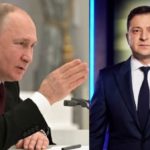

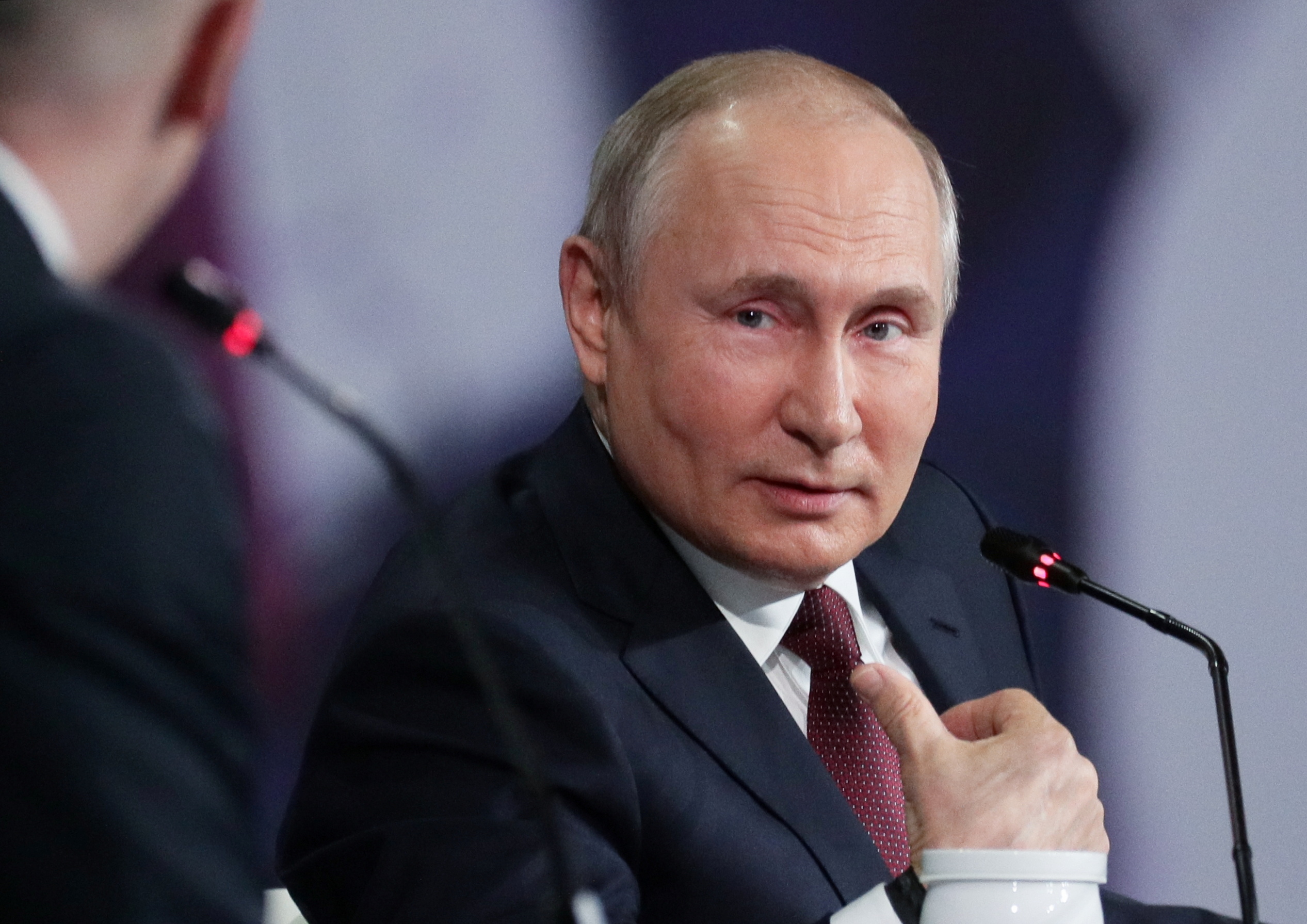
/cdn.vox-cdn.com/uploads/chorus_image/image/70543720/AP22061460079664.30.jpg)
:no_upscale()/cdn.vox-cdn.com/uploads/chorus_asset/file/23268623/GettyImages_1238730794.jpg)
:no_upscale()/cdn.vox-cdn.com/uploads/chorus_asset/file/23278619/GettyImages_1238836004.jpg)
